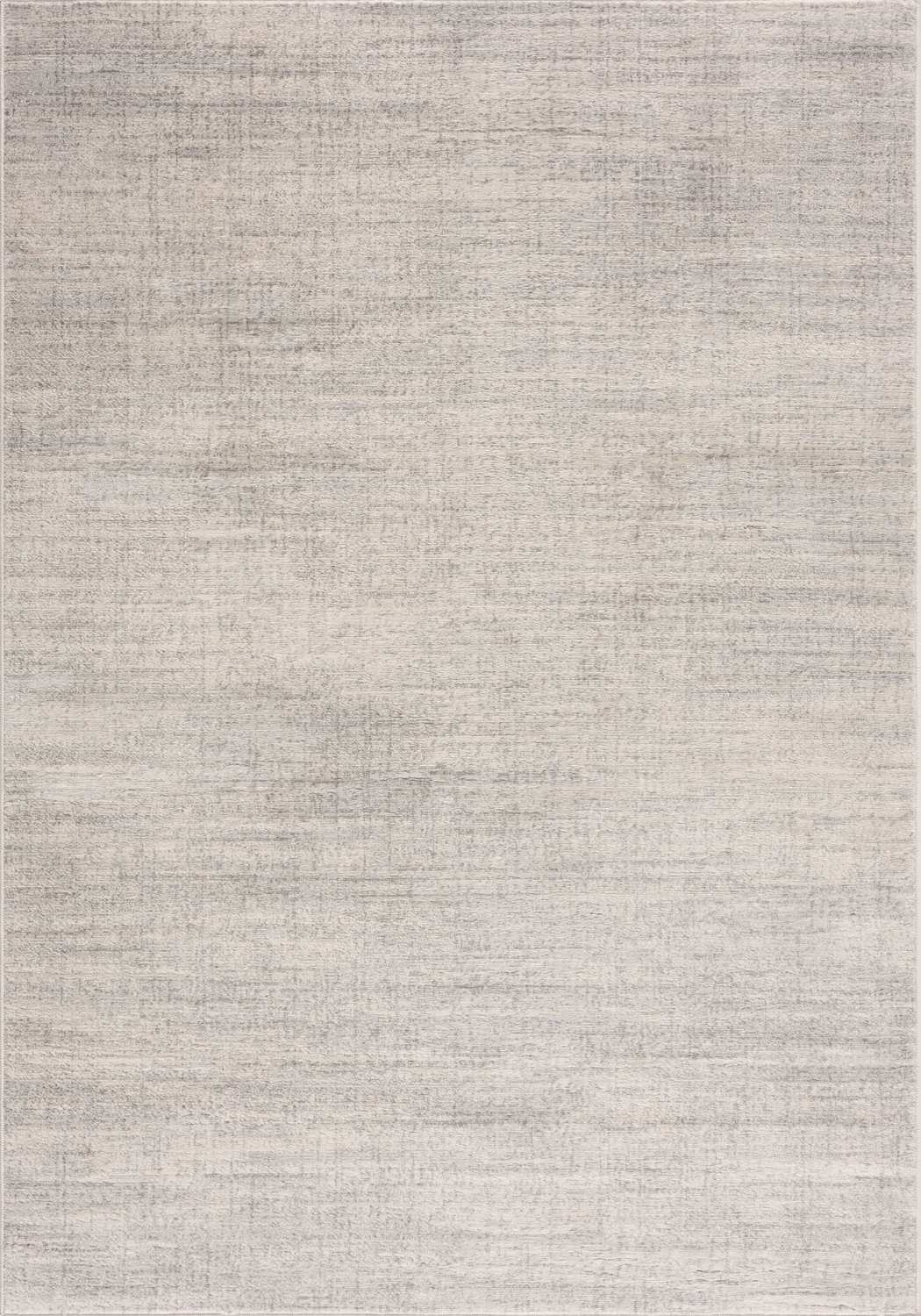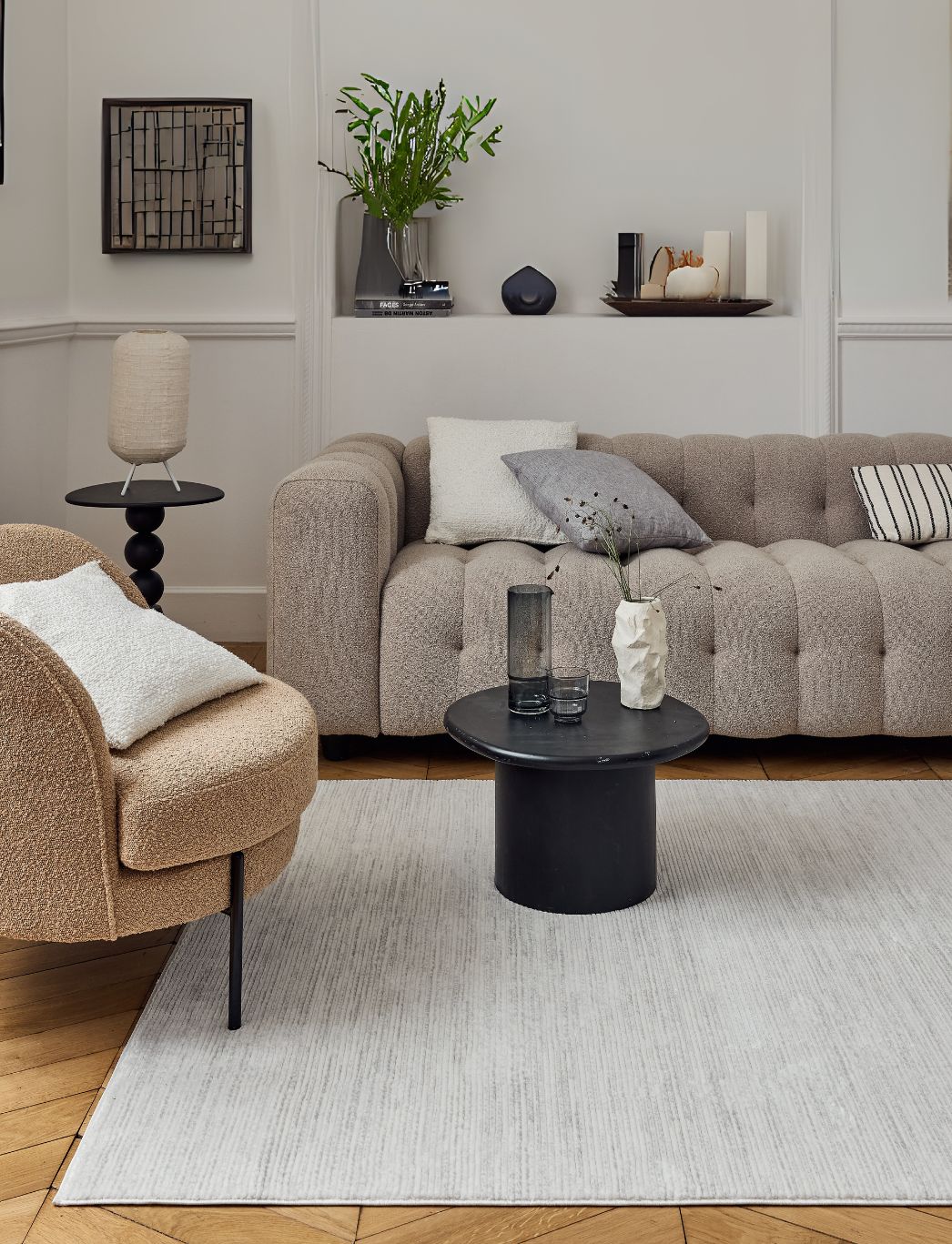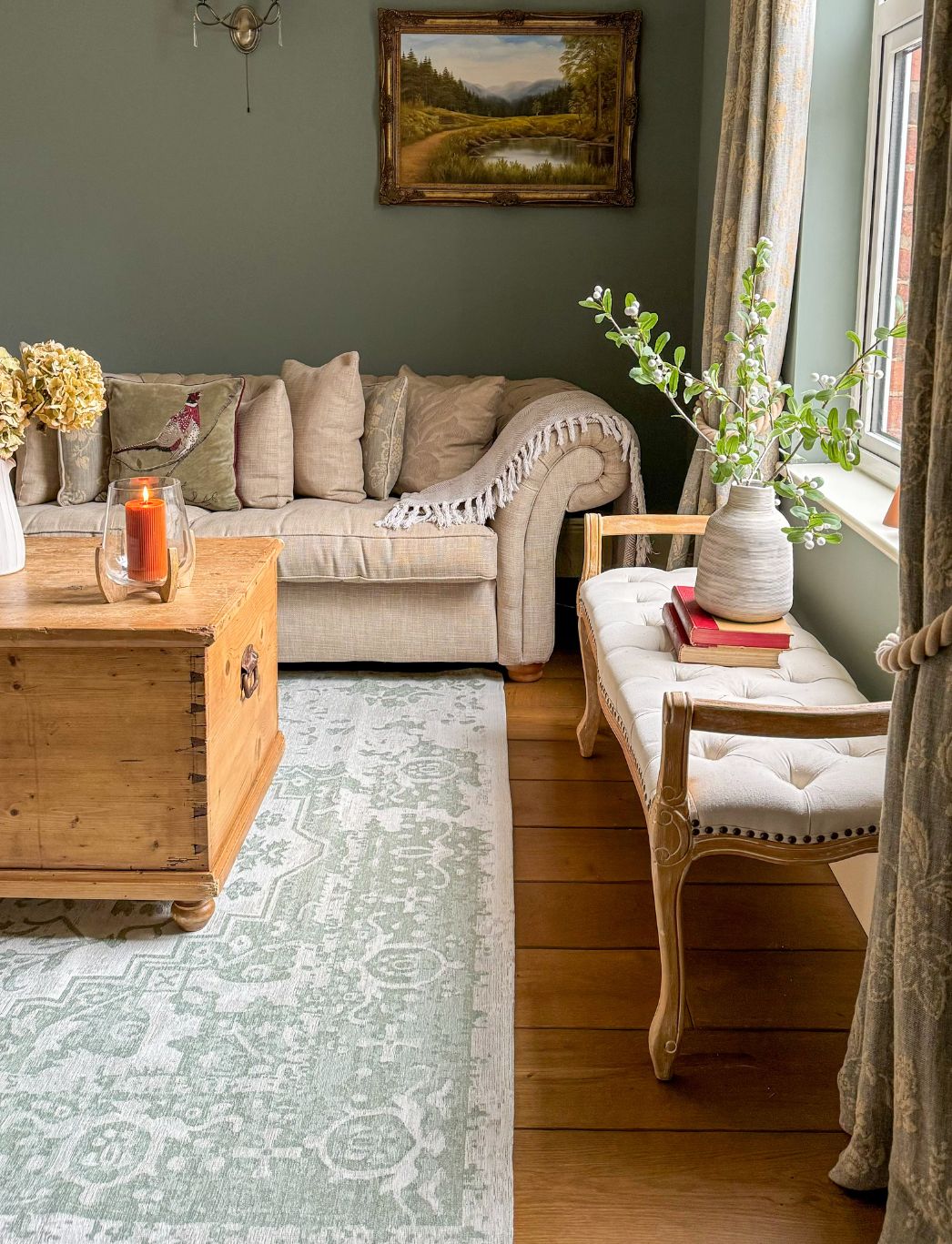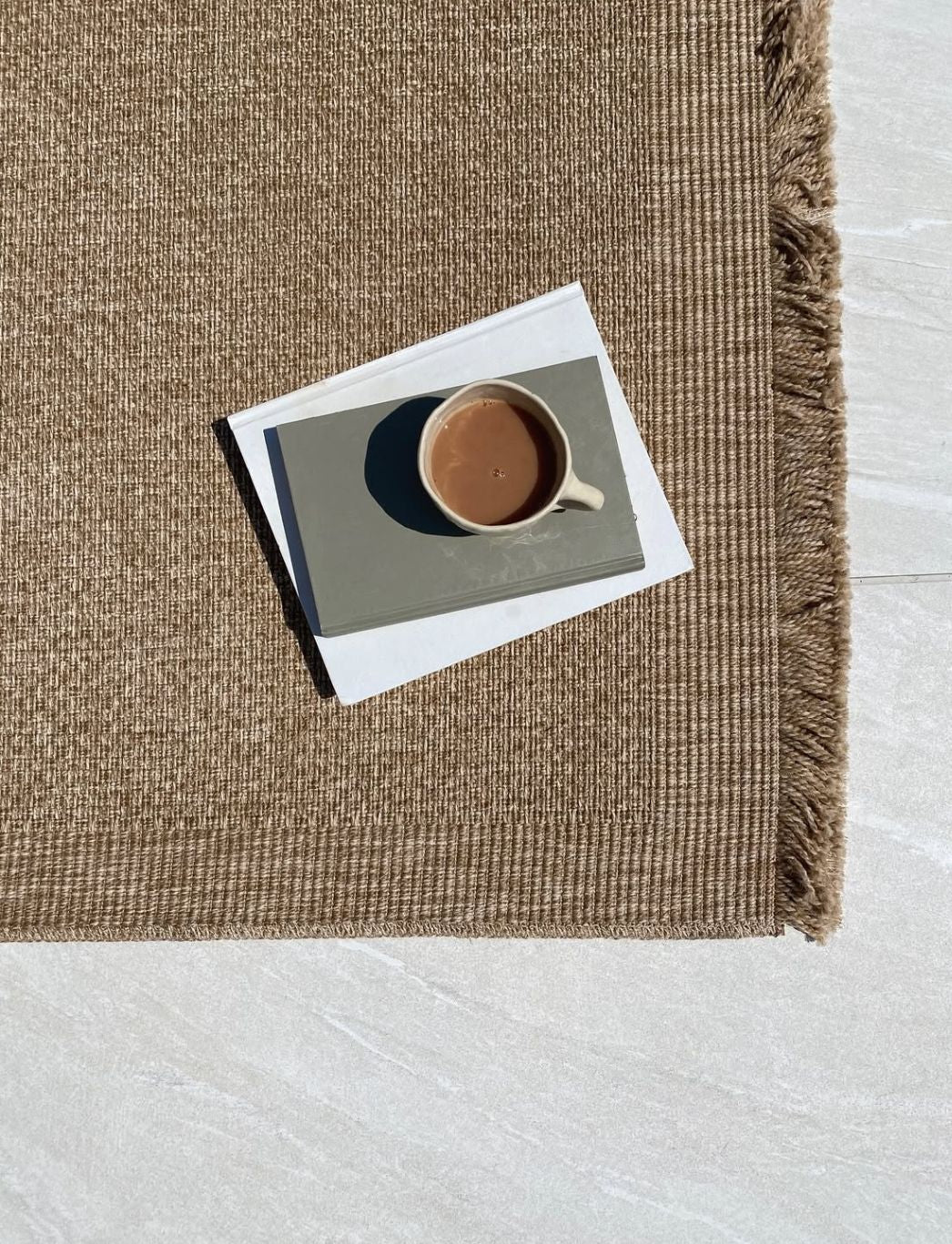Kilim Rugs The Art of Traditional Weaving

Kilim rugs are highly popular around the globe for their unique weave and appealing presence. When used in rooms, these rugs become the highlight of the place. Their global popularity majorly comes from their geometric patterns. If you’re looking to add a rug to one of your rooms - one that adds more value to the place, kilim rugs can do the job perfectly.
Let’s take a deeper look at their weaving technique, materials, and other factors for a thorough idea.
What Makes Kilim Rugs Great?
Kilim rugs are popular for various reasons. Firstly, they reflect the most appealing picture of traditional weaving. They also hold a cultural significance, making them the top rug choice for many buyers around the globe. Before you buy one, have a look at some interesting facts below.

Weaving Technique
Kilim rugs are woven using a unique flat-weave technique. While the traditional pile rugs rely on knotted yarn, kilims are created by interweaving the warp and weft threads tightly to develop a flat surface. If you are someone who likes to stand out with their choices, kilims can easily win your heart.
Choice of Materials
Kilims are typically made from natural materials like wool, cotton, or a combination of both. While both materials are great, it comes down to personal preferences when deciding between the two. It is worth noting that the choice of material can affect the texture, durability, and appearance of the rug.
Design and Patterns
Kilims are known to be rich for their intricate geometric patterns. On exploring the different designs, you may notice geometric shapes, floral motifs, and tribal symbols in kilims. These designs and patterns may vary based on the region of manufacture. Local cultural influences are often reflected in kilims. In fact, they are among the many reasons why people prefer these rugs over other options.

Cultural Significance
Kilims hold a special place in the rug market based on their cultural influences. Since they are made in different regions, including Turkey, Iran, and Afghanistan, the weave and design reflect local symbolism, making them an ideal option for those with cultural preferences. Some households use kilim rugs for practical uses, like floor coverings and wall hangings. Additionally, they are used in cultural events and ceremonies.
How to Take Care of Kilim Rugs?
When it comes to cleaning and maintenance, kilim rugs are easier to handle than traditional pile rugs. The ease comes from their lighter weight, making cleaning procedures such as vacuuming and spot-cleaning an easy job. Although kilim’s maintenance can be difficult for certain designs and patterns, you can still manage the cleaning part without getting into much hassle.
When taking care of your kilims, you might want to thoroughly understand the specified instructions to avoid problems. Remember, rugs can be sensitive to handle. Mistaking the ease of cleaning and handling it carelessly may spoil the surface.

What to Consider When Buying Kilims
When buying kilims, you may check the se, colour, design, and weave to ensure it fits your room well. They are a potential investment in your home’s interior. You might not want to choose a rug that does not fit your room’s theme. Plus, checking the seller’s reputation is a must if you are unfamiliar with the minor details of rugs and carpets.
Kilims can be a valuable addition to your home. They have everything that a modern household needs for a delightful interior. While traditional pile rugs never go out of trend, kilim rugs can better fit the easy-to-handle environment. Visit The Rugs today to explore a vast range of kilim designs and patterns for your home.

Kilim Rugs for Living Room: Adding Texture and Character
Incorporating kilim rugs into your living room can instantly add warmth and character to the space. These flat-woven carpets work well in both traditional and contemporary settings. Consider using a large kilim as a central focal point under your seating arrangement, or layer smaller kilims for a bohemian vibe. The geometric patterns and vibrant colours of kilim rugs can complement various decor styles, from minimalist to eclectic. Remember to choose a size that fits your living room layout and allows for easy furniture placement.

What Are Kilim Rugs Made Of: Understanding the Craft
Kilim rugs are typically made from natural fibres, with wool being the most common material. The warp (vertical threads) is usually made of cotton or wool, while the weft (horizontal threads) is predominantly wool. Some kilims may incorporate silk or goat hair for added texture and sheen. The flat-weave technique used in kilim production creates a durable and reversible rug. This method allows for intricate designs and patterns to be woven directly into the fabric, resulting in a unique and culturally rich floor covering.
Rugs Kilim: Exploring the World of Flat-Woven Carpets
Kilim rugs represent a unique category of flat-woven carpets with a rich history and diverse applications. These rugs are known for their bold geometric patterns, vibrant colours, and cultural significance. Kilims are not only used as floor coverings but also as wall hangings, furniture throws, and even fashion accessories. Their lightweight and versatile nature makes them popular in both traditional and modern interiors. When exploring kilim rugs, consider factors such as region of origin, weaving technique, and design motifs to fully appreciate their artistic and cultural value.

What Is the Difference Between Kilim and Rugs: Distinguishing Features
The main difference between kilim and traditional rugs lies in their construction method. Kilims are flat-woven carpets, meaning they lack the pile or knots found in conventional rugs. This results in a thinner, more lightweight product. Traditional rugs, on the other hand, are often pile-woven or knotted, creating a thicker, plusher surface. Kilims typically feature geometric patterns and are reversible, while traditional rugs can have more intricate, curvilinear designs and are usually one-sided. The flat-weave technique of kilims allows for greater portability and versatility in use.

Kilim Rugs What Are They: Unveiling the Artistry
Kilim rugs are flat-woven textiles that originate from various parts of the Middle East, North Africa, and Central Asia. These rugs are characterised by their intricate geometric patterns, bold colours, and cultural symbolism. Kilims are created using a tapestry weave technique, where the weft threads are tightly woven to cover the warp threads completely. This method results in a reversible rug with identical patterns on both sides. Kilim rugs are not only floor coverings but also serve as decorative wall hangings and are valued for their artistic and cultural significance.

Kilim vs Rug: Comparing Styles and Functionality
When comparing kilims to traditional rugs, several key differences emerge:
- Construction: Kilims are flat-woven, while rugs often have a pile.
- Thickness: Kilims are generally thinner and more lightweight.
- Patterns: Kilims typically feature geometric designs, while rugs can have more varied patterns.
- Reversibility: Kilims are usually reversible; most rugs are not.
- Durability: Kilims may be less durable in high-traffic areas compared to pile rugs.
- Versatility: Kilims can be used as floor coverings, wall hangings, or throws.
Consider these factors when choosing between a kilim and a traditional rug for your space.

What Is a Kilim Rug: Defining the Flat-Woven Wonder
A kilim rug is a type of flat-woven carpet traditionally produced in countries spanning from the Balkans to Pakistan. These rugs are distinguished by their lack of pile or knots, resulting in a smooth, flat surface. Kilims are created using a tapestry weave technique, where colourful weft threads are tightly woven to completely cover the warp threads. This method allows for the creation of intricate geometric patterns and symbolic designs. Kilim rugs are prized for their cultural significance, versatility, and unique aesthetic, making them popular choices for both traditional and contemporary interiors.
Comprehensive Guide to Turkish Kilim Rugs
What is a Turkish kilim rug?
A Turkish kilim rug is a flat-woven textile traditionally made in Turkey. It's characterized by its vibrant colors and geometric patterns, often used as floor coverings or wall hangings.
Why are kilim rugs so expensive?
Kilim rugs are expensive due to their handcrafted nature, high-quality materials, and cultural significance. The intricate designs and time-consuming weaving process contribute to their value.
What is kilim weaving?
Kilim weaving is a tapestry-like technique where weft threads are tightly intertwined with warp threads to create a flat surface without pile. This method produces durable, reversible rugs.
How can you tell if a rug is a kilim?
You can identify a kilim rug by its flat weave, lack of pile, and reversible design. Look for geometric patterns and slits where colors meet in the weave.
What is the history of the kilim rug?
Kilim rugs have a rich history dating back to ancient Anatolia. They were traditionally made by nomadic tribes and have been an important part of Turkish culture for centuries.
What is kilim fabric made of?
Kilim fabric is typically made from wool, though some modern kilims may incorporate cotton or silk. The warp threads are usually cotton, while the weft is wool.
What is kilim art?
Kilim art refers to the decorative patterns and symbolic designs found in kilim rugs. It often reflects the cultural heritage and artistic traditions of the weaver's community.
What is the difference between flatweave and kilim?
While all kilims are flatweaves, not all flatweaves are kilims. Kilims specifically use the slit-weave technique, creating distinctive gaps where colors change in the pattern.
Is kilim a pattern?
Kilim isn't a pattern itself, but rather a weaving technique. However, kilims often feature distinctive geometric patterns that are sometimes referred to as "kilim patterns."
What is the difference between kilim and dhurrie rugs?
Both are flatweaves, but kilims originate from Turkey and use the slit-weave technique, while dhurries are from India and use a plain weave without slits.
What are the three types of weaving?
The three main types of weaving are plain weave, twill weave, and satin weave. Kilims typically use a variation of the plain weave.
What art style is weaving?
Weaving is considered a form of textile art or fiber art. In the context of kilims, it's often associated with folk art and traditional crafts.
How to tell if a Turkish rug is real?
Look for hand-knotted or hand-woven construction, natural dyes, unique imperfections, and authentic materials like wool. The back of the rug should mirror the front pattern.
Do Turkish rugs hold their value?
Yes, high-quality Turkish rugs often retain or increase in value over time, especially if well-maintained. They're considered both functional items and investment pieces.
What is the difference between Persian and kilim rugs?
Persian rugs typically have a pile and are knotted, while kilims are flat-woven without pile. Persian rugs often feature more curvilinear designs, while kilims have geometric patterns.
How can you tell if a rug is kilim?
Check for a flat surface without pile, reversible design, visible weft threads, and slits where colors change. Kilims also typically feature bold, geometric patterns.
Can you wash a kilim rug?
Yes, but with care. Professional cleaning is recommended. If washing at home, use cold water, a mild detergent, and avoid agitation. Always air dry flat.
Why are Turkish rugs cheaper than Persian rugs?
Turkish rugs are often less expensive due to differences in production methods, materials used, and market demand. However, high-quality Turkish rugs can be just as valuable as Persian ones.
What country do kilim rugs come from?
Kilim rugs primarily originate from Turkey, but they're also produced in other parts of the Middle East, North Africa, and Central Asia.
How to bring a rug back from Turkey?
When bringing a rug from Turkey, declare it at customs, keep your receipt, and consider shipping for larger rugs. Check your country's import regulations before purchasing.
Which rugs are the best in the world?
The "best" rugs are subjective, but Persian, Turkish, and Moroccan rugs are often highly regarded for their quality, craftsmanship, and design.
Why does my Turkish rug smell?
New Turkish rugs might have a wool odor that dissipates over time. Persistent smells could indicate mold or mildew, requiring professional cleaning.
Why are Turkish rugs special?
Turkish rugs are special due to their rich history, cultural significance, unique designs, and high-quality craftsmanship. They often tell stories through their patterns.
Do Kilim rugs stay in place?
Kilim rugs can slip on smooth surfaces. Use a rug pad underneath to keep them in place and protect both the rug and the floor.
How can you tell if a Turkish rug is good quality?
Look for tight weaving, even patterns, natural materials, rich colors, and cultural authenticity. High-quality rugs should feel sturdy and have a consistent texture.
How do I choose a kilim?
Consider the size, color scheme, pattern, and intended use. Look for pieces that complement your decor and lifestyle while appreciating the craftsmanship.
Can you steam clean a kilim rug?
It's generally not recommended to steam clean kilim rugs as the heat and moisture can damage the fibers and dyes. Stick to professional dry cleaning methods.
How to identify a kilim rug?
Identify a kilim by its flat weave, reversible design, geometric patterns, and visible slits where colors change. Check for natural materials like wool.
What is the difference between a rug and a kilim?
A rug typically has a pile (raised fibers), while a kilim is flat-woven without pile. Kilims are also usually reversible, unlike most pile rugs.
What is a kilim in English?
In English, "kilim" refers to a flat-woven rug or carpet, typically with geometric designs, originating from Turkey and surrounding regions.
What is kilim technique?
The kilim technique is a flat-weaving method where weft threads are tightly woven around warp threads to create a flat surface. It often involves creating slits where colors change.
Where is kilim rug made?
Kilim rugs are primarily made in Turkey, but also in other countries like Iran, Afghanistan, Pakistan, and parts of North Africa and the Balkans.
What is the history of kilims?
Kilims have been produced for thousands of years, originating with nomadic tribes in Anatolia. They served both functional and symbolic purposes, often containing tribal motifs.
What is the oldest kilim?
The oldest known kilims date back to the 4th or 5th century CE, discovered in the Tarim Basin of China. However, the weaving technique is believed to be much older.
What is kilim fabric?
Kilim fabric refers to the flat-woven textile produced using the kilim technique. It's characterized by its reversible nature and typically geometric designs.
Which country is most famous for rugs?
Iran (Persia) is arguably the most famous for rug production, but Turkey, India, China, and Morocco are also renowned for their distinctive rug-making traditions.
What is the meaning of the kilim design?
Kilim designs often carry symbolic meanings, representing tribal identities, personal stories, or protection against evil. Common motifs include geometric shapes, animals, and plants.
What are the uses of kilims?
Kilims are versatile, used as floor coverings, wall hangings, furniture throws, pillow covers, and even fashion accessories. They add color and cultural flair to spaces.
What is the history of rug weaving?
Rug weaving dates back to ancient civilizations, with evidence of rugs from 6000 BCE. It evolved from basic utilitarian mats to intricate art forms across various cultures.
How can you tell if a rug is a kilim?
To identify a kilim, look for a flat surface without pile, reversible patterns, visible weft threads, and characteristic slits where colors change in the design.
What is the difference between soumak and kilim?
Soumak and kilim are both flatweave rug techniques, but they differ in construction. Kilim uses a simple interlocking weft technique, resulting in a flat, reversible rug. Soumak, on the other hand, employs a wrapping technique that creates a thicker, more textured surface with a distinctive braided appearance. Soumak rugs are typically sturdier and more durable than kilims.
What is kilim style?
Kilim style refers to a type of flatwoven rug or textile characterized by its geometric patterns and vibrant colors. Originating from the Middle East and Central Asia, kilims are known for their lightweight, reversible nature. The style often incorporates traditional motifs and symbols, making each piece a unique representation of cultural heritage and artistic expression.
What is the difference between carpet and kilim?
The main difference between carpet and kilim lies in their construction. Carpets typically have a pile, created by knotting or tufting fibers onto a backing, resulting in a thick, plush surface. Kilims, conversely, are flatwoven without a pile, using a tapestry-like technique that produces a thin, reversible rug. Kilims are generally lighter and more versatile in use compared to traditional carpets.
How to identify kilim?
To identify a kilim, look for its distinctive flatweave construction without a pile. Examine the rug for geometric patterns and bold colors, which are hallmarks of kilim design. Check if the rug is reversible, as most kilims have identical patterns on both sides. Look for slits where colors meet, a characteristic feature of kilim weaving. Authentic kilims are often made from natural fibers like wool or cotton.
What is a soumak weave?
Soumak weave is a flatweave technique that creates a textured, embroidery-like surface. Unlike simple kilim weaving, soumak involves wrapping weft threads around warp threads in a diagonal pattern. This method results in a thicker, more durable rug with a distinctive braided appearance on the front and a rough back with hanging threads. Soumak rugs are known for their intricate designs and sturdy construction.
How do you clean a Turkish kilim rug?
Cleaning a Turkish kilim rug requires gentle care to preserve its colors and integrity. Start by vacuuming both sides regularly to remove loose dirt. For deeper cleaning, use a mild soap solution and gently hand-wash the rug, avoiding excessive water. Never machine wash or dry clean a kilim. After washing, rinse thoroughly and lay flat to dry, ensuring even drying to prevent warping. For stubborn stains or valuable pieces, consult a professional rug cleaner.
What fabric is kilim?
Kilim rugs are traditionally made from natural fibers, with wool being the most common material. The warp threads (vertical) are typically made of cotton or wool for strength, while the weft threads (horizontal) are usually wool. Some modern kilims may incorporate other materials like silk, goat hair, or even synthetic fibers. The choice of fabric affects the rug's durability, texture, and overall appearance.
How to use kilim?
Kilim rugs are versatile and can be used in various ways. Place them as floor coverings in living rooms, bedrooms, or hallways to add color and pattern. Hang kilims on walls as decorative tapestries to create a focal point. Use smaller kilims as throw pillows or upholstery fabric for a unique touch. Drape kilims over furniture like sofas or benches for added texture. Their lightweight nature also makes them ideal for outdoor use as picnic blankets or patio decor.
What is a Turkish rug called?
Turkish rugs are known by various names depending on their specific type and origin. The most common term is "Hali", which generally refers to pile rugs. "Kilim" is used for flatwoven rugs without pile. Other terms include "Tulu" for long-pile rugs, "Cicim" for embroidered flatweaves, and "Sumak" (or Soumak) for wrapped-weft rugs. Each type has its unique characteristics and cultural significance within Turkish rug-making tradition.
How is a kilim made?
Kilim rugs are made using a flatweave technique on a vertical or horizontal loom. The weaver interlaces weft threads (horizontal) through taut warp threads (vertical) to create the design. Colors are changed as needed, resulting in characteristic slits where different colored areas meet. The weft is beaten down tightly, creating a flat, reversible surface. Patterns are formed by varying the colors and the way weft threads are passed over and under warp threads.
What is soumak carpet?
A soumak carpet is a type of flatwoven rug that uses a distinctive wrapping technique. Unlike simple kilim weaving, soumak involves wrapping weft threads around multiple warp threads before returning in the opposite direction. This creates a thicker, more durable rug with a textured, embroidery-like surface on the front and a rough back with hanging threads. Soumak carpets are known for their intricate designs, sturdy construction, and ability to showcase complex patterns.
Related Blog Posts
Rug-Making Traditions from Around the World
Rug History: From Nomadic Tribes to Modern Homes
Related Rug Collections










Leave a comment